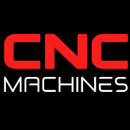Exploring the Impact of Tariff Changes on American Manufacturing in 2025

The Political Landscape of American Manufacturing: Tariff Changes and Their Impact on Production in 2025
Tariff Changes: Anticipated Adjustments and Their Effects
Current Tariff Landscape
Tariffs are taxes imposed on imported goods, designed to protect domestic industries from foreign competition by making imported products more expensive. As of 2024, the U.S. has seen fluctuating tariff rates, particularly on goods from China, which has significant implications for American manufacturers.
Expected Adjustments in 2025
- Increase on Certain Imports: The Biden administration may implement higher tariffs on select imported goods, particularly those considered critical to national security and domestic production.
- Trade Negotiations: Ongoing trade negotiations could lead to adjustments in tariffs as the U.S. seeks to balance trade deficits while protecting local industries.
Potential Effects
- Imported Goods Costs: Increased tariffs on imports could drive up the costs of raw materials and components, forcing manufacturers to adjust their pricing strategies.
- Local Manufacturing Costs: As imported goods become more expensive, local manufacturers may find it advantageous to produce more domestically, potentially increasing production costs initially but providing long-term sustainability and job growth.
Political Positions: The Divide on Tariffs and Manufacturing
Democratic Perspective
The Democratic Party generally supports higher tariffs on goods from countries like China to protect American jobs and industries. Key points include:
- Protection of Domestic Industries: Democrats advocate for tariffs that shield local manufacturers from unfair competition.
- Focus on Sustainability: There is an emphasis on supporting industries that align with environmental sustainability, influencing decisions on which sectors to protect.
Republican Perspective
Conversely, the Republican Party often views tariffs as a double-edged sword, supporting them in some cases while cautioning against the potential negative impacts on consumers and manufacturers. Key points include:
- Free Market Emphasis: Republicans typically advocate for free trade and may argue that excessive tariffs can lead to increased prices for consumers.
- Support for American Businesses: While supporting tariffs to protect American businesses, there is also a concern about maintaining competitive pricing for domestic consumers.
Implications for Policy
The political divide on tariffs will shape policy decisions affecting manufacturing practices, sourcing strategies, and overall economic growth in the coming years.
The Impact of China on American Manufacturing
Supply Chain Dependencies
China's role as a manufacturing powerhouse has made it a critical player in the global supply chain. However, increasing tariffs and geopolitical tensions have led to several challenges:
- Reliance on Imports: Many American manufacturers rely heavily on imported components from China, and any tariff increase could disrupt production and lead to higher costs.
- Supply Chain Disruptions: The COVID-19 pandemic highlighted vulnerabilities in supply chains, prompting manufacturers to reconsider their reliance on overseas production.
The Push for Domestic Production
In response to these challenges, there is a growing push for domestic production:
- Reshoring Initiatives: Companies are exploring reshoring strategies to bring manufacturing back to the U.S., reducing dependency on Chinese imports.
- Investments in Automation: To maintain competitiveness, many manufacturers are investing in automation technologies to increase production efficiency domestically.
Strategic Responses: Navigating Political Changes
1. Diversifying Supply Chains
Manufacturers should consider diversifying their supply chains to reduce reliance on a single country. By sourcing materials and components from various regions, companies can mitigate risks associated with tariffs and geopolitical tensions.
2. Investing in Domestic Production
Investing in local manufacturing capabilities can enhance resilience. By expanding domestic production facilities or collaborating with local suppliers, companies can reduce their exposure to import tariffs.
3. Engaging in Policy Advocacy
Manufacturers can engage in advocacy efforts to influence tariff policies. By collaborating with industry associations, they can voice their concerns and support measures that promote fair trade practices.
4. Embracing Innovation and Automation
Incorporating advanced technologies and automation can help manufacturers remain competitive. By improving production efficiency and reducing costs, companies can better absorb the impacts of tariff changes.
5. Monitoring Market Trends
Staying informed about market trends, tariff developments, and political changes is essential. Manufacturers should actively monitor these factors to adapt their strategies accordingly.
Conclusion
As we look toward 2025, the political landscape surrounding American manufacturing will significantly impact sourcing decisions and production practices. Anticipated tariff changes, differing political positions, and the influence of China will shape the industry's future. By adopting strategic responses and focusing on domestic production, manufacturers can navigate these challenges effectively and position themselves for success in an evolving market.
Embracing innovation, diversifying supply chains, and engaging in policy advocacy will be crucial for companies looking to thrive in the complex and dynamic landscape of American manufacturing.


